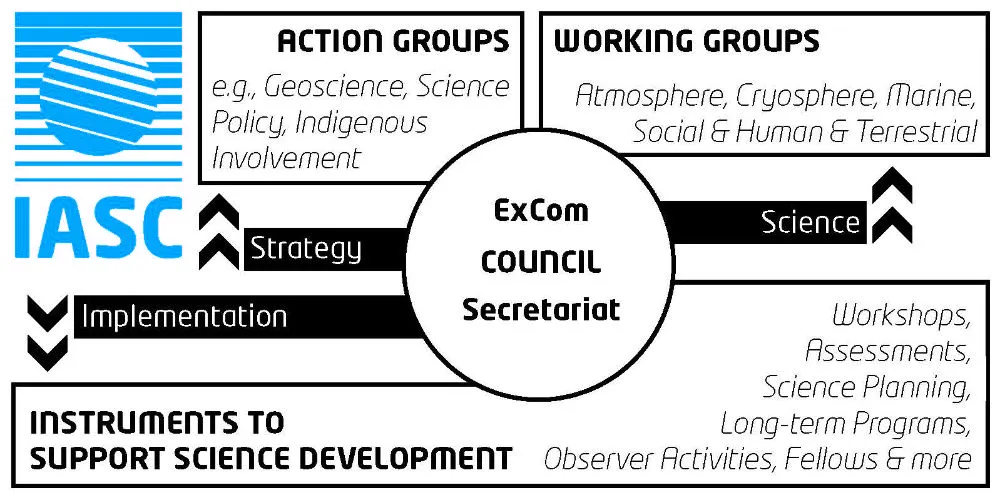The rapid climatic changes in the Arctic are not yet fully understood, but they affect the entire global climate system. IASC‘s mission is to foster collaboration within the Arctic research community and promote interdisciplinary research to achieve a better scientific understanding of the Arctic region and its role in the Earth system. Three science priorities are at the forefront of this effort:
IASC’s science priorities
The role of the Arctic in the Global System
In order to address current knowledge gaps and global connections, an approach that spans disciplines, scales and diverse knowledge systems in future research activities is necessary.
Observing and Predicting Future Climate Dynamics and Ecosystem Responses
It is critical to anticipate Arctic changes and develop adaptation actions rather than just responses. To do so, increased monitoring and sustained observations must be made and integrated with new and innovative modelling approaches to provide more timely information to Arctic residents and policy-makers alike.
Understanding the Vulnerability and Resilience of Arctic Environments and Societies and Supporting Sustainable Development
Sustainable infrastructure development and innovation to strengthen the resilience of Arctic communities and ecosystems requires a collaborative approach involving scientists from all disciplines, as well as representatives from communities, governments and industry.
IASC’s strategy
The IASC Strategic Plan for 2023-2026 is based on three pillars and will be implemented as follows:
Pillar 1: Facilitating Arctic Research Cooperation
• Stimulating and promoting cutting-edge interdisciplinary research
• Supporting sustained and coordinated observations
• Facilitating data and information management and sharing
• Supporting the reduction of carbon footprint in all IASC activities and research co-operations
Pillar 2: Promoting Engagement
• Building Arctic research capacity
• Supporting participation by Indigenous and local residents in science activities
• Nurturing and expanding IASC partnerships
Pillar 3: Ensuring Knowledge Exchange
• Encouraging high-quality scientific output
• Transferring knowledge to policy and decision makers
• Increasing Arctic science education, outreach and communication
The full IASC strategic plan for 2023-2026 is here.
The IASC newsletter informs about new activities.
Organization
The International Arctic Science Committee (IASC) is a non-governmental organization and member of the International Science Council (ISC). IASC seeks to stimulate and enable collaboration across the spectrum of Arctic research, in all countries engaged in Arctic research, and in all regions of the Arctic.
IASC member organizations are national science organizations covering the broad field of Arctic research. Each national organization has its own procedures to ensure contact between the IASC Council member and its community of scientists. Building on this structure, IASC identifies scientific priorities and appoints members to its working groups.
An international scientific program planned or recommended by IASC should have a high priority in the area of Arctic or global research.
IASC was established in 1990 by the scientific organizations of the eight Arctic staates. Today, IASC has 23 member countries. The current president of IASC is Henry Burgess.
The secretariat (Gerlis Fugmann) is located in Akureyri (Iceland).
IASC informs with its news news archive about current work and ongoing projects, as well as about future IASC events.

The organizational structure of IASC consists of: